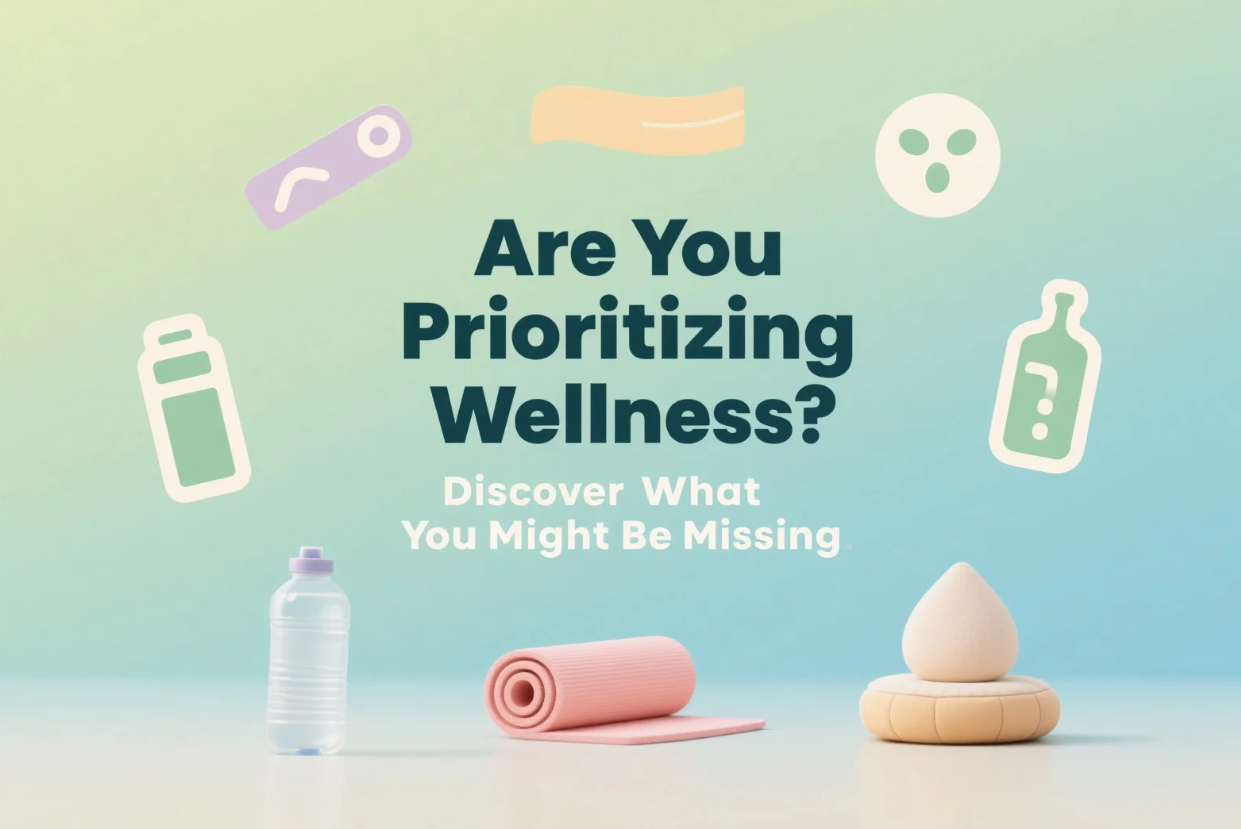How to Achieve Optimal Health and Wellness in Just 30 Days
-
730
- 01 Mar, 2025

Are you ready to transform your health and wellness in just one month? Whether you're looking to shed some extra pounds, boost your energy levels, or adopt a healthier lifestyle, achieving optimal health and wellness is possible—and it doesn’t require years of effort. In fact, with the right approach, 30 days is enough time to make significant improvements in your physical, mental, and emotional well-being.
This article will guide you through a comprehensive, practical 30-day plan that will focus on the essential components of health and wellness, including nutrition, exercise, mental health, and sleep. By the end of this journey, you’ll be well on your way to achieving a balanced, healthy lifestyle that lasts.
What You Will Learn
In this article, we will cover:
- Daily habits to integrate into your life for optimal health
- The best foods to eat for better physical health
- A simple yet effective workout plan to enhance fitness
- How to improve your mental health and manage stress
- Tips for achieving better sleep quality for overall wellness
This is not about quick fixes but about establishing sustainable habits that will carry you forward long after the 30 days.
Why 30 Days?
You might be wondering, why focus on just 30 days? This period is long enough to help establish new habits and break old ones, but short enough to stay motivated and see real results. Research shows that it takes about 21 to 30 days to form a new habit, and with consistency, the positive changes you make in these 30 days will continue long-term.
The 30-Day Plan to Achieve Optimal Health and Wellness
Week 1:
Foundation of Healthy Eating
Focus: Nutrition and Hydration
In the first week, we will focus on setting the groundwork for healthy eating and hydration. The key is to gradually shift towards better food choices without overwhelming yourself.
1. Start with a Whole-Food Diet
Prioritize whole foods: Fresh fruits, vegetables, lean proteins, whole grains, and healthy fats should make up the bulk of your diet.
Limit processed foods: Cut down on foods that are high in sugar, unhealthy fats, and artificial ingredients.
Incorporate healthy snacks: Nuts, seeds, and fresh fruit are excellent alternatives to processed snacks.
2. Hydrate Properly
Drink more water: Aim for at least 8 cups (64 ounces) of water a day. Hydration is key for energy levels and digestion.
Infuse your water: Add some fresh lemon, mint, or cucumber to make it more enjoyable and give your body an extra boost of nutrients.
3. Clean Out Your Pantry
Get rid of temptations: Clean out your kitchen and remove junk food that may be hard to resist.
Stock up on healthy options: Fill your pantry with whole grains, legumes, and healthy snacks.
Week 2:
Moving Your Body
Focus: Exercise and Physical Activity
In the second week, we’ll focus on building a regular exercise routine that includes a mix of strength training, cardiovascular activity, and flexibility.
1. Start With Light Exercise
Daily movement: Aim for 20-30 minutes of physical activity each day. This could include walking, light jogging, cycling, or any activity that increases your heart rate.
Stretch daily: Incorporate gentle stretching into your routine to improve flexibility and reduce the risk of injury.
2. Add Strength Training
Bodyweight exercises: Push-ups, squats, lunges, and planks can be effective bodyweight exercises that build strength without equipment.
Strength training 2-3 times a week: Incorporate strength workouts using your body weight or dumbbells.
3. Stay Consistent
Track progress: Keep track of your workouts and progress. Celebrate small victories like increased stamina or improved strength.
Rest and recovery: Take a day off each week to rest and recover.
Week 3:
Mental Health and Stress Management
Focus: Mindfulness and Stress Relief
Your mental health is equally important as your physical health. In week three, we focus on stress management and introduce practices such as mindfulness and meditation to your daily routine.
1. Practice Mindfulness
Mindful breathing: Spend 5-10 minutes a day practicing mindful breathing. Breathe deeply and focus on your inhales and exhales to calm your nervous system.
Meditation: Download a meditation app like Headspace or Calm to guide you through short sessions that can improve focus and reduce anxiety.
2. Manage Stress Effectively
Break tasks into smaller pieces: Avoid feeling overwhelmed by breaking down larger tasks into smaller, manageable actions.
Engage in hobbies: Spend time doing things you love—whether it's painting, gardening, or listening to music. Hobbies are a great way to unwind and release stress.
3. Get Social
Spend time with loved ones: Social connection is vital for emotional well-being. Plan time to connect with friends or family, whether in person or virtually.
Join a community: Consider joining a local group or online community focused on health and wellness.
Week 4:
Enhancing Sleep Quality
Focus: Sleep Hygiene
Getting quality sleep is crucial for optimal health. In week four, we’ll focus on improving your sleep habits to ensure you're getting enough rest to support your body and mind.
1. Stick to a Sleep Schedule
Stick to a consistent sleep schedule by going to bed and waking up at the same time each day, including weekends. This helps regulate your internal clock and enhances sleep quality.
Create a relaxing pre-sleep routine: Consider a warm bath, reading a book, or practicing gentle stretching to wind down before bed.
2. Optimize Your Sleep Environment
Keep your bedroom cool and dark: The ideal temperature for sleep is between 60-67°F (15-19°C). Use blackout curtains if necessary.
Limit screen time: Steer clear of screens (phone, tablet, TV) for at least an hour before bed, as the blue light can disrupt your ability to fall asleep.
3. Avoid Stimulants Before Bed
Limit caffeine and sugar: Avoid consuming caffeine or sugary foods later in the day, as they can interfere with your ability to fall asleep.
Tracking Your Progress
One of the most important aspects of this 30-day wellness plan is tracking your progress. Keep a journal to track your food intake, workouts, stress levels, and sleep patterns. This will not only help you stay accountable, but it will also allow you to see where you’ve made progress and where you need to adjust.
Tips for Long-Term Success
Stay consistent: After 30 days, make sure to continue the habits you've built. Consistency is key to maintaining optimal health.
Don’t be too hard on yourself: Success is a gradual process. Celebrate the small wins and don’t get discouraged by setbacks.
Seek professional guidance: If needed, consult a nutritionist or fitness coach to help tailor the plan further to your personal needs.
Achieving optimal health and wellness in just 30 days is absolutely possible if you approach it with intention and consistency. By focusing on nutrition, exercise, mental health, and sleep, you can create lasting habits that will improve your overall well-being. Remember, this is a journey, not a destination—so embrace the process and celebrate your progress along the way.
Ready to get started? Take it one step at a time, and in 30 days, you’ll be amazed at how far you’ve come. Here’s to your health and wellness journey!








